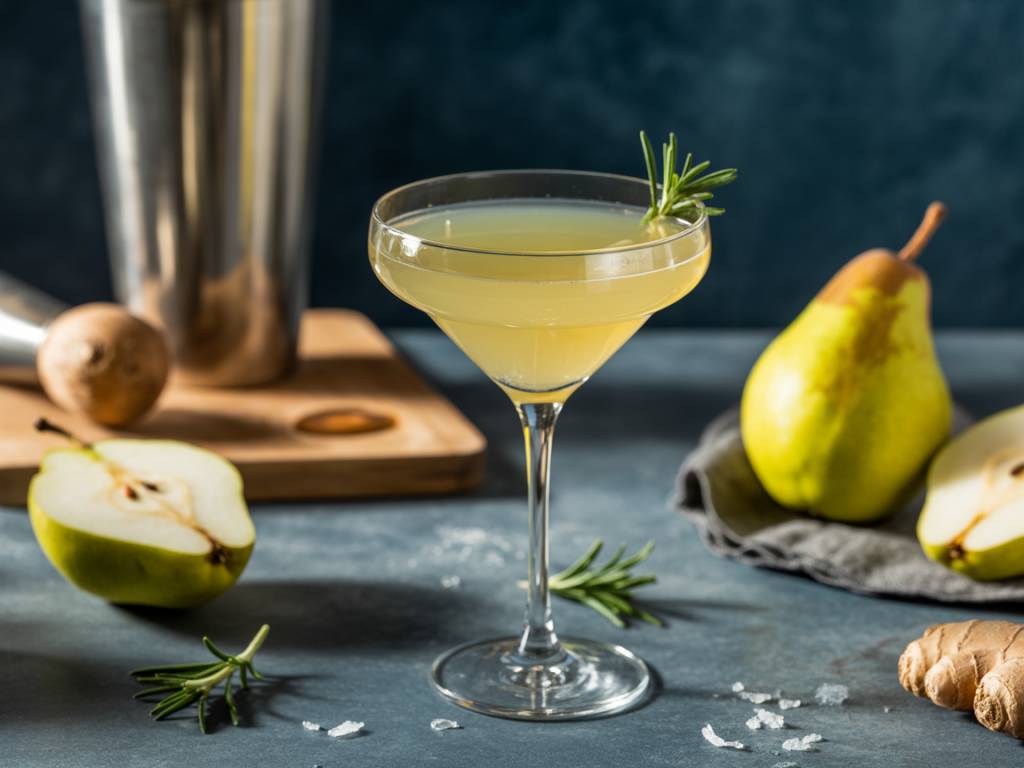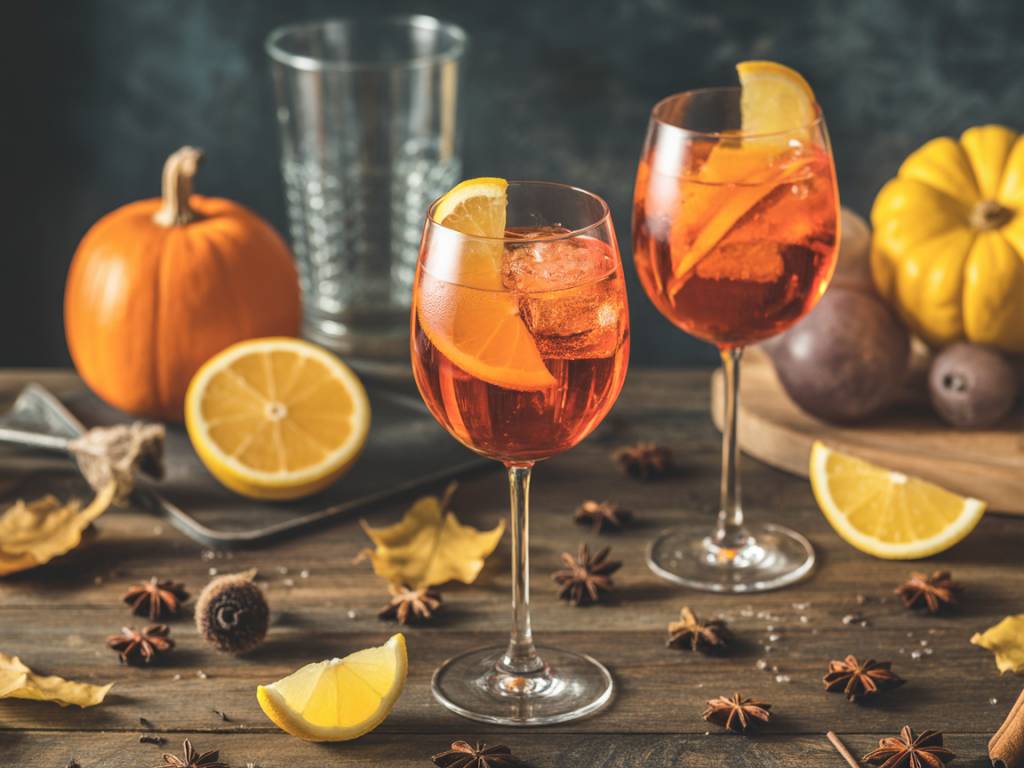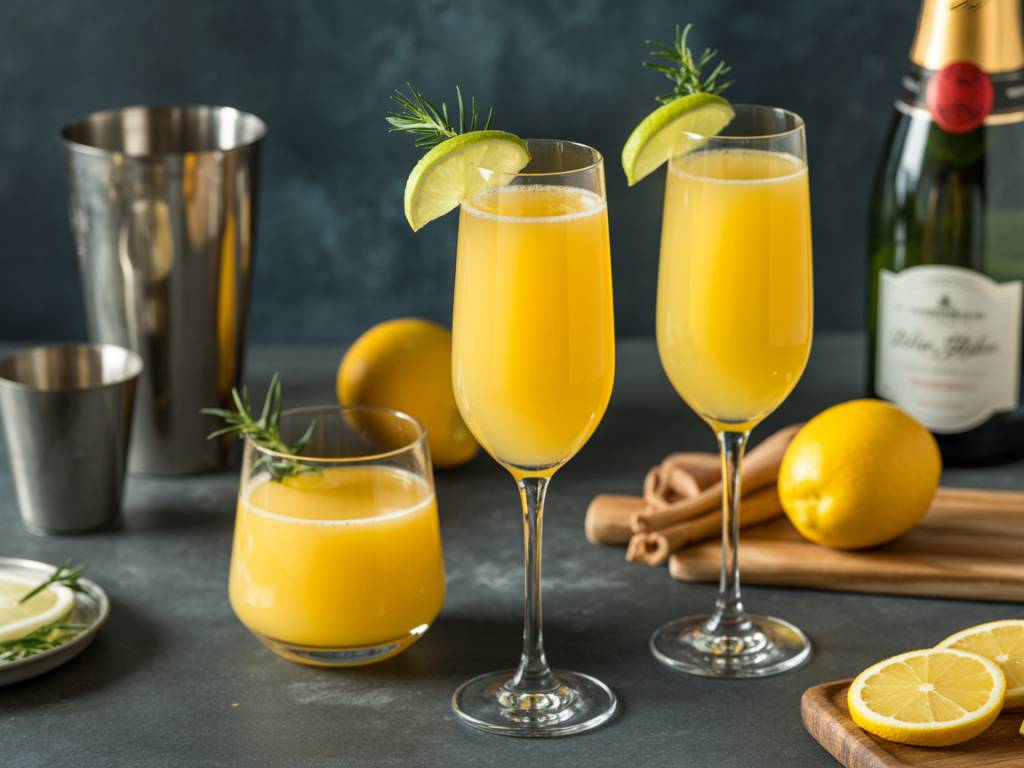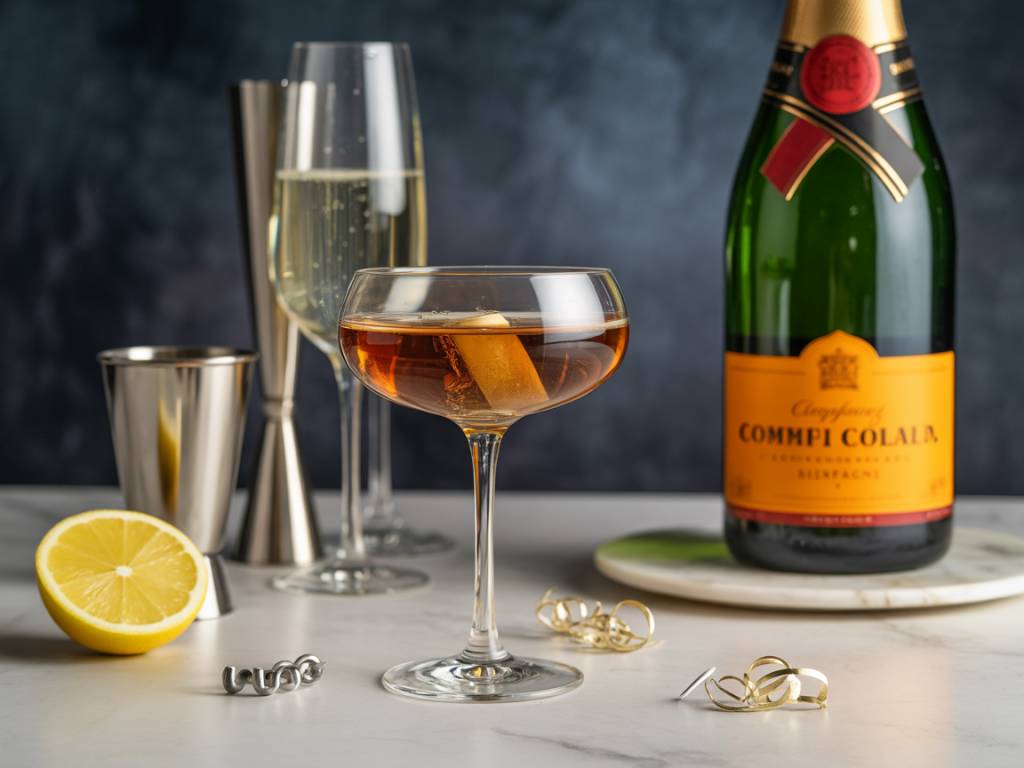The Allure of the Pear Ginger Martini
There’s something about pairing the soft sweetness of ripe pear with the warming bite of fresh ginger that just works. It hits that rare sweet spot between refreshing and spicy—light enough for an aperitif, bold enough to stand beside the main course. The Pear Ginger Martini is one of those cocktails that sneaks up on you. Simple in appearance, yet full of complex flavor.
This one became a go-to during my time managing late-fall cocktail menus at a farm-to-bar concept in upstate New York. We were sourcing fresh Bosc pears from the orchard down the road and making house-infused ginger vodka in quart batches. The combo became a fast favorite. Guests ordered it once and asked for the recipe after the second round. So here it is—refined for the home bar without losing the bar-quality finish.
What You’ll Need
Let’s get to the heart of clean, crisp flavor. The key to a good Pear Ginger Martini is balance: soft fruit, sharp spice, and enough acidity to keep things bright—not syrupy. Here’s your shopping list:
- 2 oz ginger-infused vodka (recipe below)
- 1 oz pear purée or juice (fresh is best—avoid concentrates or high-fructose blends)
- 0.5 oz lemon juice (freshly squeezed, always)
- 0.25 to 0.5 oz simple syrup (adjust to your sweetness preference)
- Ice for shaking
- Garnish: thin pear slice or candied ginger
Pro tip: If you’re short on time and can’t make your own vodka infusion, you can use a quality store-bought ginger liqueur like Domaine de Canton. Just adjust your simple syrup accordingly—it’s already sweet.
How to Make Ginger-Infused Vodka
If you’ve never made a vodka infusion before, this is a great place to start. It’s straightforward, forgiving, and you’ll find yourself reaching for it in more drinks than you expect (try it in a Moscow Mule, thank me later).
- Take a 16 oz (500 ml) mason jar and fill it with 1 cup of peeled, sliced fresh ginger. Aim for coins about the thickness of a nickel.
- Pour in 12 oz of good-quality vodka—something clean and neutral like Tito’s or Ketel One.
- Seal and let it infuse for 24–36 hours, tasting along the way. The longer you infuse, the hotter and spicier the ginger note will grow. I find 30 hours is the sweet spot for balance.
- Strain through a fine mesh sieve or cheesecloth. Bottle and refrigerate—it’ll keep well for a few weeks.
One important note: don’t go overboard with the infusion time. Unlike herbs, which fade, ginger’s heat intensifies. Overshoot and you’ll end up burning your palate instead of tickling it.
Let’s Build That Martini
Now for the fun part. We’re keeping the build classic: shake and strain for clarity and chill.
- Fill a shaker with ice.
- Add 2 oz ginger-infused vodka, 1 oz pear juice or purée, 0.5 oz lemon juice, and 0.25–0.5 oz simple syrup (adjust based on your pear’s sweetness).
- Shake vigorously for 10–15 seconds. You want that shaker ice-cold—frost forming on the outside is your visual cue.
- Double strain into a chilled martini glass. The mesh strainer helps catch any pulp from fresh pear purée or shards of ice.
- Garnish with a pear slice floated on the surface, or for extra flair, a skewer of candied ginger.
Jack’s tip: Rim your glass with a touch of crystallized ginger sugar if you’re serving this as a festive or special-occasion cocktail. It adds a nice aromatic lift with the first sip—and yes, it looks sharp too.
Tweaks and Substitutions
Not all bars—or kitchens—are built the same, and that’s perfectly fine. I’ve tested a few variations when ingredients were MIA or I just wanted to play with the base. Here’s what works:
- No fresh pears? A high-quality pear nectar can do the trick. Ceres or R.W. Knudsen brands offer pure options with no added sugar.
- Ginger liqueur instead of vodka? Sub 1.5 oz regular vodka + 0.5 oz Domaine de Canton. Drop the simple syrup or reduce it to a barspoon—it’s sweet enough on its own.
- Make it bubbly: Shake everything but swap the martini glass for a coupe, and top with a dry sparkling wine or soda. It turns the drink into a spritz-adjacent sipper, perfect for brunch or garden parties.
- Add herbs: A single smashed basil leaf or rosemary sprig shaken with the mix adds an aromatic element that plays nicely against the sweet and spicy base.
When to Serve It
This is a surprisingly versatile cocktail. Personally, I love it as a welcome drink in the fall—think Thanksgiving or autumn dinner parties. But swap in lighter parts and chill everything to the bone, and it becomes surprisingly refreshing in late spring. Here’s where it shines:
- Welcome drink for holiday gatherings
- Pairing with roast chicken or pork
- Date night aperitif
- Signature cocktail at wedding receptions (yes, it’s elegant enough!)
If serving for a crowd, you can batch it in advance—just leave the lemon juice out until serving time to preserve freshness. A quick example:
Batch for 8 cocktails: Mix 16 oz ginger vodka, 8 oz pear juice/purée, and 4 oz simple syrup up to 3 hours before the event. Keep chilled. Right before serving, add 4 oz fresh lemon juice, stir well, and shake/strain to serve.
Common Mistakes to Avoid
Here are a few pitfalls I’ve seen home bartenders run into when making this cocktail, and how to avoid them:
- Using low-quality juice: Skip anything labeled “pear drink” or “from concentrate.” You want 100% juice for clean flavor.
- Over-infusing ginger: More time doesn’t equal more flavor—it equals all burn, no nuance. Stick to 24–36 hours max.
- Over-shaking it: This drink prefers a firm yet brief shake. Don’t dilute it into pear water. Keep it cold, not flooded.
- Skipping the double strain: Especially if you’re using fresh purée, those tiny bits can ruin the texture. Don’t skip the sieve.
Final Pour
The Pear Ginger Martini isn’t just another flavored twist on a vodka martini—it’s got character. It plays with texture, aroma, and contrast, and it’s one of those rare drinks that can fit a tuxedo event or a Tuesday night glass after work. And the best part? It’s one you can master without a commercial bar setup. All you need is the right balance—and now, you’ve got that.
So grab a shaker, track down a ripe pear, and get to it. Let me know how it goes in the comments—or if you’ve got a pear varietal or ginger infusion trick I should try next. I’ll be behind the bar, waiting.





